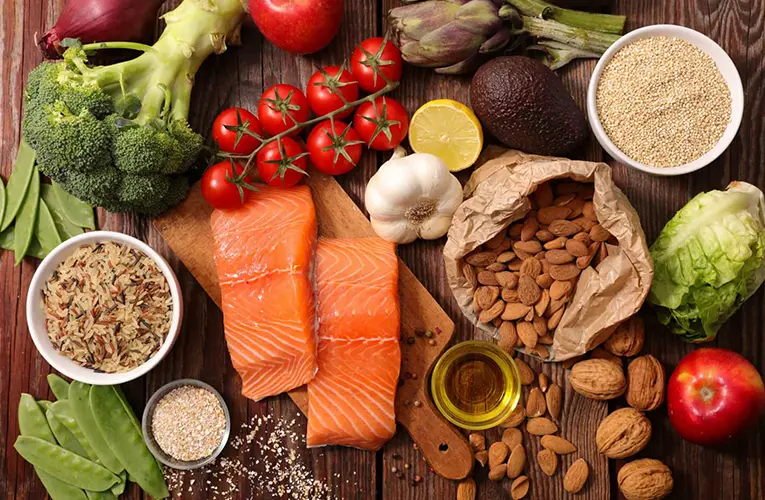“The Dark Side of Junk Food: Health Risks and Consequences”
### “The Dark Side of Junk Food: Health Risks and Consequences”
Junk food, often characterized by its high content of sugar, fat, and salt, and its low nutritional value, has become a ubiquitous part of modern diets. While it is often convenient and appealing, its consumption can have significant adverse effects on health. This guide explores the health risks and consequences of junk food, providing insights into its impact on various aspects of well-being and offering recommendations for healthier alternatives.
—
### 1. Understanding Junk Food
#### **1.1 Definition and Characteristics**
– **Junk Food:**
– **Definition:** Foods that are typically high in calories but low in essential nutrients. They often contain high levels of sugar, saturated fats, trans fats, and sodium.
– **Characteristics:** Low in vitamins, minerals, and fiber; often heavily processed with artificial additives.
– **Examples:**
– Fast food items (burgers, fries, fried chicken)
– Sugary snacks (cookies, candy, pastries)
– Sugary beverages (soda, energy drinks)
– Processed convenience foods (chips, frozen dinners)
—
### 2. Health Risks Associated with Junk Food
#### **2.1 Weight Gain and Obesity**
– **Mechanism:**
– High-calorie content and low satiety can lead to overeating and weight gain.
– Excessive intake of sugar and fat contributes to the accumulation of body fat.
– **Consequences:**
– Increased risk of obesity, which can lead to additional health issues such as diabetes, cardiovascular disease, and joint problems.
#### **2.2 Cardiovascular Disease**
– **Mechanism:**
– High levels of saturated and trans fats can raise LDL cholesterol (bad cholesterol) and lower HDL cholesterol (good cholesterol).
– High sodium content contributes to hypertension (high blood pressure).
– **Consequences:**
– Increased risk of heart disease, stroke, and other cardiovascular conditions.
#### **2.3 Type 2 Diabetes**
– **Mechanism:**
– Excessive sugar consumption leads to insulin resistance and higher blood sugar levels.
– The combination of high sugar and fat intake can impair glucose metabolism.
– **Consequences:**
– Greater risk of developing type 2 diabetes, which can lead to complications such as neuropathy, retinopathy, and kidney disease.
#### **2.4 Digestive Issues**
– **Mechanism:**
– Low fiber content can lead to poor digestion and constipation.
– Processed foods often contain additives and preservatives that can affect gut health.
– **Consequences:**
– Increased risk of digestive problems such as constipation, irritable bowel syndrome (IBS), and other gastrointestinal issues.
#### **2.5 Mental Health Effects**
– **Mechanism:**
– High sugar intake can impact brain function and mood regulation.
– Poor nutrition can lead to deficiencies that affect mental well-being.
– **Consequences:**
– Potential links to anxiety, depression, and cognitive decline.
#### **2.6 Nutritional Deficiencies**
– **Mechanism:**
– Junk food often displaces nutrient-dense foods in the diet, leading to deficiencies in essential vitamins and minerals.
– **Consequences:**
– Increased risk of deficiencies that can impact overall health, such as weakened immune function, poor bone health, and fatigue.
—
### 3. The Impact of Junk Food on Specific Populations
#### **3.1 Children and Adolescents**
– **Health Risks:**
– Higher risk of childhood obesity and related health problems.
– Potential impact on cognitive development and academic performance.
– **Long-Term Consequences:**
– Increased likelihood of developing health issues such as type 2 diabetes and cardiovascular disease in adulthood.
#### **3.2 Adults**
– **Health Risks:**
– Greater risk of chronic diseases such as heart disease, diabetes, and hypertension.
– Potential impact on work productivity and overall quality of life.
– **Long-Term Consequences:**
– Accelerated aging and increased risk of chronic health conditions.
#### **3.3 Seniors**
– **Health Risks:**
– Increased risk of frailty, cognitive decline, and other age-related health issues.
– Potential impact on mobility and independence.
– **Long-Term Consequences:**
– Higher likelihood of chronic diseases and reduced quality of life.
—
### 4. Strategies for Reducing Junk Food Consumption
#### **4.1 Educate Yourself and Others**
– **Understanding Labels:**
– Learn to read food labels and identify high sugar, fat, and sodium content.
– **Awareness:**
– Educate yourself and your family about the health risks associated with junk food.
#### **4.2 Healthy Alternatives**
– **Substitute Choices:**
– Choose whole foods like fruits, vegetables, lean proteins, and whole grains over processed snacks.
– **Recipe Modifications:**
– Modify recipes to reduce unhealthy ingredients and increase nutrient density.
#### **4.3 Mindful Eating**
– **Portion Control:**
– Practice portion control to avoid overeating high-calorie foods.
– **Balanced Meals:**
– Plan balanced meals that include a variety of nutrients and minimize the inclusion of junk food.
#### **4.4 Planning and Preparation**
– **Meal Planning:**
– Plan and prepare meals in advance to reduce reliance on convenience foods.
– **Healthy Snacks:**
– Keep healthy snacks readily available to reduce temptation.
#### **4.5 Support and Motivation**
– **Support Systems:**
– Seek support from friends, family, or health professionals to maintain healthy eating habits.
– **Goal Setting:**
– Set achievable health goals and track progress to stay motivated.
—
### 5. The Role of Policy and Environment
#### **5.1 Public Health Campaigns**
– **Awareness Campaigns:**
– Support public health initiatives that promote healthy eating and raise awareness about the risks of junk food.
– **Educational Programs:**
– Participate in or advocate for educational programs that teach healthy eating habits.
#### **5.2 Policy Changes**
– **Regulation:**
– Support policies that regulate the marketing of junk food, particularly to children.
– **Nutrition Standards:**
– Advocate for improved nutrition standards in schools and public institutions.
#### **5.3 Environmental Changes**
– **Access to Healthy Foods:**
– Promote initiatives that increase access to fresh, healthy foods in underserved communities.
– **Food Environment:**
– Encourage changes in the food environment to make healthier choices more accessible and convenient.
—
### 6. Conclusion
– **Summary:**
– Junk food consumption poses significant health risks, including weight gain, cardiovascular disease, type 2 diabetes, and mental health issues. Its impact varies across different populations, highlighting the need for targeted strategies to mitigate its effects.
– **Encouragement:**
– Embrace healthier eating habits and make informed choices to improve overall well-being and reduce the reliance on junk food.
– **Call to Action:**
– Take steps to reduce junk food consumption, advocate for healthier food policies, and support initiatives that promote a balanced and nutritious diet.
—
This guide provides a comprehensive overview of the health risks and consequences associated with junk food, offering practical strategies for reducing consumption and improving overall health. By understanding the impact of junk food and making informed choices, individuals can better manage their health and well-being.










